Business networking meetings provide many benefits, including:
- Building and expanding professional connections
- Sharing information, ideas, and resources
- Generating leads and referrals for new business opportunities
- Improving brand recognition and visibility
- Building relationships and trust with potential clients and partners
- Gaining valuable insights into industry trends and developments.
1. Building and expanding professional connections.
- Attend networking events and conferences in your industry.
- Participate in online professional networks, such as LinkedIn.
- Join a professional organisation related to your field.
- Attend meetings and events hosted by local business groups or chambers of commerce.
- Participate in community events and volunteer opportunities.
- Offer to help others in your network and be willing to receive help in return.
- Follow up with new contacts regularly and maintain relationships through communication.
- Seek out opportunities to collaborate on projects or initiatives with other professionals.
- Offer value to others by sharing your expertise, insights, and resources.
- Be genuine, open-minded, and respectful in all your professional interactions.
2. Sharing information, ideas and resources.
- Engage in active listening: Show interest in what others are saying and ask questions to gather more information.
- Offer helpful insights and advice: Share your knowledge and experiences to help others.
- Share resources: Offer to connect others with people, information, or resources they may find useful.
- Collaborate on projects: Find ways to work together on projects that benefit both parties.
- Present a brief talk or give a demonstration: Share your expertise by giving a presentation or demo on a topic you are knowledgeable about.
- Share your business cards: Provide others with your contact information to facilitate follow-up and future collaboration.
- Follow up after the meeting: Send a quick email or message to recap the meeting and reiterate your willingness to collaborate or help in any way.
- Participate in group discussions: Contribute to group discussions and brainstorming sessions to share your ideas and hear from others.
By actively engaging in these techniques, you can effectively share information, ideas and resources in a business networking meeting.
3. Generating leads and referrals for new business opportunities.
- Build relationships: Focus on building relationships with others, rather than just selling your products or services.
- Ask for introductions: Ask your connections to introduce you to others who may be interested in your products or services.
- Offer to help others: Be open to helping others in your network, even if it doesn’t immediately lead to a new business opportunity.
- Share your business story: Clearly and succinctly communicate what your business does and what it can offer to others.
- Be a valuable resource: Offer helpful information, insights, and advice that can benefit others in your network.
- Follow up: After the meeting, follow up with those you have met and continue to build the relationship.
- Participate in networking groups: Join networking groups or organisations related to your field to meet others who can refer business to you.
By utilising these strategies, you can effectively generate leads and referrals for new business opportunities.
4. Improving brand recognition and visibility.
- Consistently present your brand: Ensure that your attire, business cards, and marketing materials accurately reflect your brand and consistently represent it.
- Be an engaging speaker: Share your knowledge, experiences, and insights in a clear and concise manner to build credibility and make a lasting impression.
- Offer to give a presentation or demonstration: Share your expertise by giving a presentation or demo that showcases your brand and its offerings.
- Share your brand’s story: Clearly communicate your brand’s mission, values, and unique selling proposition to help others understand what makes it stand out.
- Network with relevant individuals: Seek out opportunities to network with individuals and organisations that align with your brand and target market.
- Follow up with attendees: After the meeting, follow up with attendees and continue to build relationships to improve brand recognition and visibility over time.
- Leverage social media: Utilise social media platforms like LinkedIn and Twitter to share updates, insights, and news related to your brand and engage with others.
By consistently and effectively utilising these techniques, you can improve brand recognition and visibility.
5. Building relationships and trust with potential clients.
- Focus on building relationships: Take the time to get to know others and understand their needs, goals, and challenges.
- Be a good listener: Show genuine interest in what others have to say, ask questions, and actively listen to their responses.
- Be transparent and honest: Be open and honest about your goals, experiences, and what you can offer to others.
- Offer to help: Demonstrate your willingness to help others and provide value by sharing your expertise and resources.
- Follow up after the meeting: After the meeting, follow up with those you have met and continue to build the relationship.
- Foster open communication: Encourage open and regular communication to deepen the relationship and build trust.
- Provide consistent and reliable service: Ensure that your interactions and transactions with others are professional, reliable, and consistent.
By utilising these strategies, you can effectively build relationships and trust with potential clients and partners in a business networking environment.
6. Gaining valuable insights into industry trends and developments.
- Ask questions: Engage in active listening and ask others about their experiences and perspectives on industry trends and developments.
- Participate in group discussions: Contribute to group discussions and brainstorming sessions to gain new insights and perspectives.
- Seek out experts: Look for individuals who are well-informed about industry trends and developments and seek their opinions and advice.
- Attend presentations and demonstrations: Attend presentations and demonstrations that provide insight into industry trends and developments.
- Follow industry thought leaders: Follow influential individuals and organisations in your industry to stay informed about new developments and trends.
- Utilise industry-specific resources: Read industry-specific publications, attend industry events, and join professional organisations to stay up to date on industry trends and developments.

